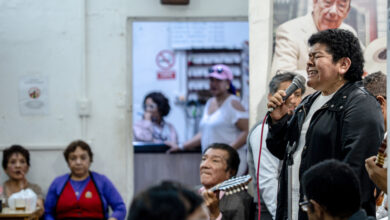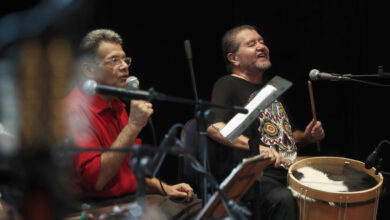5 plays of the 20th century to listen during Easter
The Passion of Christ takes on a new dimension through the various musical languages of the 20th century.

We present 5 musical works that you can enjoy this Easter. / Photo: Pxhere
LatinAmerican Post | Luis Liborio
Listen to this article
Leer en español: 5 notables obras del siglo XX para escuchar en Semana Santa
Easter is coming in a difficult year, a season in which we cannot attend the concert halls due to the contingency. Taking advantage of the quarantine that invites reflection, we can listen to notable plays within the repertoire of the 20th century that have as their main theme the passion, death, and resurrection of Christ.
Regardless of religious beliefs, these works are authentic masterpieces that allow us to understand the concept of Christianity in the voice of fundamental composers of the last century.
Without further ado, we recommend these 5 plays:
1. Quatre motets pour un temps de pénitence by Francis Poulenc
The motet is a musical form that dates back to the Middle Ages, intended for choral performance and that has been transforming over the centuries. Francis Poulenc found his inspiration in Johann Sebastian Bach's motets to compose the Four Motets for a time of penance, says choral director Paula Torres, in the notes to the program for a concert at the Alberto Hurtado University in Chile.
Each motet is dedicated to one of Poulenc's mentors, where Nadia Boulanger stands out. Each piece reflects a crucial moment in Jesus' journey to the cross: suffering, anger, peace and pain, which Poulenc manages to translate into sounds. The four motets that make up the work are: "Timor et Tremor", "Vinea Mea Electa", "Tenebrae Factae Sunt" and "Tristis est Anima Mea". This is the version of the Aedes ensemble, directed by Mathieu Romano.
2. Nones by Luciano Berio
Released in 1955 under the direction of Bruno Maderna, this play is based on the poem Nones by Wystan Hugh Auden. The title refers to the Nona, one of the canonical hours corresponding to 3:00 pm, time in which the death of Christ traditionally occurs on the cross.
Thus, the Passion of Christ is fused with a deep reflection on the very nature of man. The language used is far from the "angelic" choirs and harmonies of the previous centuries, giving a new perspective to the music of this theme. According to the author's own notes, the work was originally conceived as a cantata for soloists, choir and orchestra, but in the creative process it ended up being only for orchestra.
This performance is by the London Symphony Orchestra conducted by the composer.
3. Passio Domini Nostri Jesu Christi secundum Joannem by Arvo Pärt
Estonian composer Arvo Pärt is one of the benchmarks of sacred music in the 20th and 21st centuries, most of his work concentrates on choral music. The Passion of Christ according to Saint John was released in 1982 according to information from the Arvo Pärt Center, being one of the composer's most extensive works.
The Gospel of Saint John is divided between four soloists, in addition to the voices of Jesus (bass) and Pontius Pilate (tenor), accompanied by a small ensemble: viola, oboe, cello, bassoon, and organ. Pärt uses different techniques and textures to represent the events, among them the tintinnabuli stands out, a technique developed by the same author. In this version he performs the Mogen Dahl Chamber Choir, conducted by Mogen Dahl.
Also read: Beyond the 9th symphony: 5 Beethoven plays you should know
4. Water Passion after St. Matthew by Tan Dun
The Water Passion according to San Mateo is an interesting mix of styles, composed by the Chinese composer Tan Dun. The work dates from 2000 and is inspired by the homonymous work of Bach.
The author declares on his page that it was conceived with water as a powerful visual element that transcends throughout the work, from start to finish. Seventeen bowls of water are distributed on stage forming a cross, in whose quadrants two choirs (male and female) are accommodated, in addition to the violin, cello and percussion.
Tan Dun uses various styles such as Chinese operatic singing and Mongolian singing, which contrast with that of the Western Baroque style, among other various techniques. The version we present was directed by the composer and presented at La Jolla Music Society's SummerFest 2012.
5. Johannes Passion by Sofia Gubaidulina
An incredible play, in the Passion according to Saint John Sofia, Gubaidulina manages to create a terrifying atmosphere, where the divinity and the difficult moments of Jesus towards the cross are not traditionally represented.
The composer presents these crucial moments in a dark way, Stephen Johnson of the BBC Music Magazine highlights these characteristics explaining that one of the engines of the work is the use of the interval of 2a. minor, highly dissonant, perfect for creating the atmospheres in which Gubaidulina wishes to place the listener.
The critic, cited by Arkiv Music, also highlights the numerous influences he finds in the work, particularly that of composers from the former Soviet bloc. This version was directed by Valery Gergiev.




